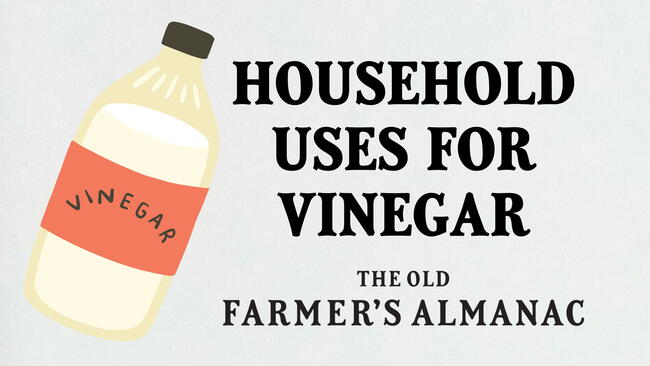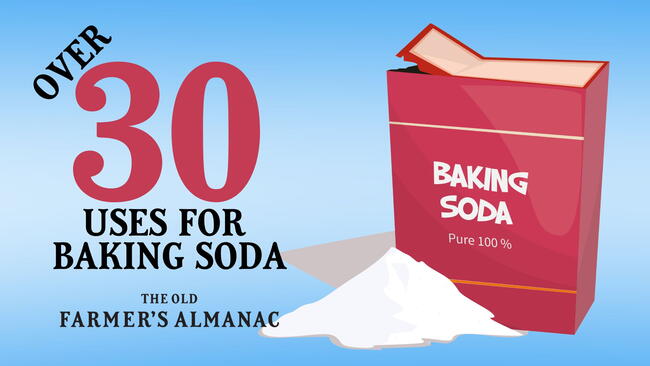It’s hard to think of a natural substance that serves so many everyday purposes as vinegar—from cleaning to lawn care. However, it’s also acidic, which means it’s NOT for everything and can cause damage to your health and home if you use it improperly. Here are things that you should NOT use vinegar for.
The Many Uses of Vinegar
We’re huge fans of vinegar. It’s natural and non-toxic. It’s cheap to buy. It’s versatile.
People use vinegar (Note: not always safely or effectively) to clean windows (sinks, appliances, glassware, coffee-makers, dental retainers, etc.), remove stains, kill weeds, condition their hair, remove smelly-dog odors from fabrics, “age” wood, remove sticky labels, disinfect cutting boards and other surfaces, ease the pain of insect stings and sunburns, prevent fabric dyes from running, fluff up and stiffen egg whites, make cottage cheese from milk, soften fabrics, dry up pimples, lose weight, disinfect wounds, sanitizing fresh fruits and vegetables, and to prevent or treat diverse ills.
See the many uses of vinegar.
And let’s not forget vinegar’s use in pickling and its appeal as a flavoring ingredient in salad dressings, marinades, and cooked dishes, and as an ingredient in refreshing summer drinks or winter tonics (e.g., shrubs, switchel, fire cider).
Whew!
What is Vinegar?
Vinegar, whose name derives from the French vin aigre, meaning sour wine, is produced naturally through a two-stage process that starts when yeasts digest the sugars in fruits, grains (and sometimes vegetables) into wines, beers, or grain alcohols. Acetic acid bacteria, ubiquitous in the environment, further ferment the alcohol into vinegar. (Learn about the fascinating history of vinegar and current lore.)
Commercially available bottles of vinegar have been mixed with water or other liquids to contain between four and eight percent acetic acid—the Food and Drug Administration has a four-percent-minimum standard. The label must indicate the percentage of acetic acid.
So-called “horticultural” or “industrial” vinegars typically contain between 20 percent and 30 percent acetic acid.
Most supermarkets and specialty food stores offer various kinds of vinegar, often named from the material first fermented into alcohol, but sometimes containing herbs, spices, fruits, or other flavoring agents.
But all types of vinegar, by definition, contain some percentage of acetic acid, which is responsible for at least some of its effects. And some of these effects can cause damage to you, your pets, or the materials you’re working with. So heed the caveats.
When to Use Vinegar—When NOT to Use Vinegar
Is Vinegar Safe to Eat and Drink?
Yes and no. First, we are only talking about white vinegar with 5% acetic acid, nothing more.
- If it doesn’t irritate your digestive system, enjoy your 5% vinegar in pickles, tasty dressings and marinades, drizzled over cooked vegetables, and well-diluted in beverages.
- But don’t start swigging undiluted vinegar! It’s still acetic acid. Especially undiluted, vinegar may harm mouth and digestive-system tissues; a tablespoon of vinegar is enough for salad dressing or to flavor a quart of drinking water.
- Take special care with children who have suffered serious burns from drinking vinegar and from vinegar compresses used to lower fevers or soothe sunburns. If you have children or child visitors, lock up household vinegar (including those stored under the sink with cleaning compounds).
Is Vinegar Safe for Home Remedies?
- Before using vinegar as a do-it-yourself remedy, read this National Poison Control Center fact sheet.
- No matter how many testimonials you read or hear about the miracles of vinegar, don’t use it to self-medicate without consulting your doctor. Vinegar may interfere with prescription or over-the-counter medications or supplements you take. Treating yourself for a serious medical problem before consulting your doctor may delay appropriate medical treatment.
- For the same reasons, unless suggested by your doctor, stay away from acetic acid/cider vinegar tablets, widely promoted for weight loss.
- Swabbing a small wound, pimple, or insect sting with household vinegar may help sanitize the area and relieve the pain, swelling, or itching. But don’t use vinegar as a compress. Don’t saturate any large area of skin with vinegar, and don’t cover a vinegar-treated area with a bandage.
- Don’t use undiluted vinegar or vinegar preparations to freshen your breath or whiten your teeth. Its acid may erode tooth enamel and injure sensitive tissues.
- Forget the commercial hair conditioner and rinse with a few tablespoons of apple cider vinegar but dilute the vinegar in a quart or so of warm water. (Using vinegar will remove the residues of hair-care products and close the hair cuticles, protecting them from splitting and giving your hair a sleek, well-conditioned look.)
Is Vinegar Safe as a Garden Herbicide?
Here’s the basic information for using strong vinegar to kill weeds. If you use it, store and handle it with extreme care.
- Because most people think of vinegar as a common and benign pantry staple, someone might mistake industrial-strength vinegar for a household product. So store the vinegar under lock and key away from kitchen staples, and post a warning sign on the bottle if the label doesn’t already contain one.
- The much stronger acid content of weed-killing vinegars can cause severe burns and permanent eye damage. Wear chemical-resistant gloves, eye protection, long sleeves and pants before you load the sprayer and head to the garden.
- Don’t spray when it’s windy; spray drift may kill desirable plants nearby. Point the sprayer nozzle away from you. Experts say vinegar works best for small, annual broadleaf weeds and recommend using vinegar sprays on small areas only.
Where is Vinegar Safe to Use and NOT Use for Cleaning?
Important caveat: If you do choose to use vinegar as a cleaning agent, never mix it with bleach, ammonia, or hydrogen peroxide because any of these mixtures will create toxic gases.
- Vinegar is safe for cleaning glass, appliances, and ceramic bathroom fixtures. A mixture of half vinegar and half water in a spray bottle is unparalleled.
- Do not use vinegar on hardwood floors or no-wax floors. Over time, vinegar’s acidity will actually take away the shine and dull the floors.
- Do not use vinegar on stone including granite or quartz; it may be tempting but over time, the stone will become etched and damaged.
- Vinegar can indeed play an important role in the household laundry. Choose white vinegar (grain based) for all laundry and stain-removal purposes; apple-cider vinegar and other flavored vinegars may stain your clothes, rugs, curtains, etc.
- A cup of white vinegar in the rinse cycle will dissolve the soap and detergent residues in clothes and in the machine, as well as brighten, deodorize, help soften, and remove many stains from clothes. It’s also safe for septic systems. Note: The user manuals of some new appliances (dishwashers and washing machines) may tell users to avoid vinegar because it can pit the appliances’ synthetic rubber seals.
- Occasionally, run vinegar through your coffee pot to eliminate residues. Afterward, run water through a few times to fully rinse.
- Do not use vinegar to wipe down computer or smartphone screens, as it may damage their protective coatings.
- When it comes to carpet stains, especially pet stains, vinegar isn’t really going to do the job. Use a pet enzymatic carpet cleaner (found in grocery stores) to get rid of the stain so the pet doesn’t soil in the same place.
Vinegar in Food Safety
- Studies have shown that household vinegar is a pretty good antimicrobial wash for washing fruits and vegetables.
- For sanitizing cutting boards and other food preparation surfaces, “heat ½ cup white distilled vinegar (5%) in a saucepan to 150⁰F or 66⁰C. Be sure and handle heated liquids carefully, as they will be warm but not hot. Using a funnel, pour the warm solution into a spray bottle. Immediately spray the cutting board, countertops, or other kitchen surfaces. Let the solution remain on the surface for 1 minute and then wipe with a clean paper towel.”
Does anything here surprise you? Please comment below!
Now that you’re aware of the cautions, see the many household uses for vinegar!











Comments